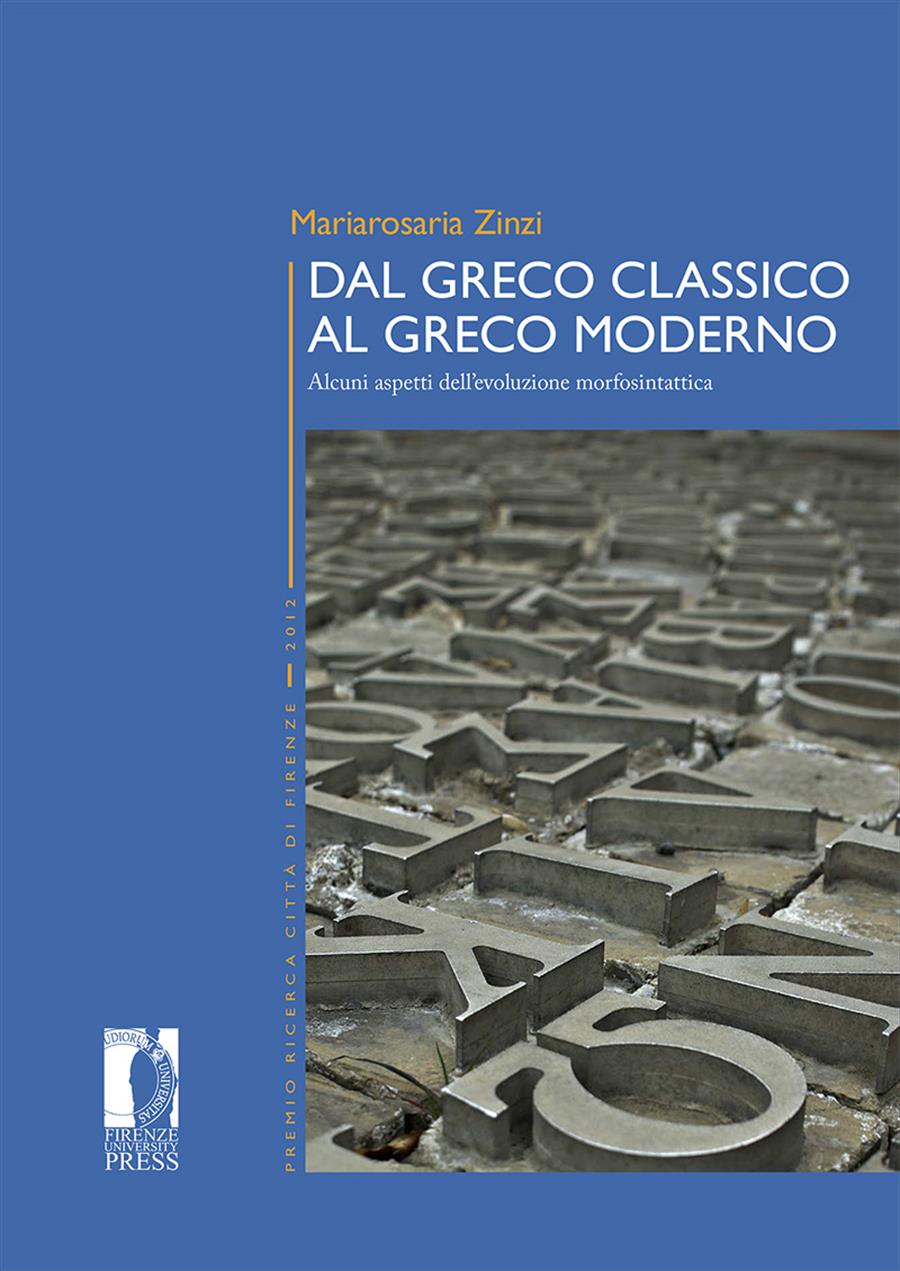
University of Florence, Italy - ORCID: 0000-0002-6302-4769
+ More about the authors
© 2013 Author(s)
Published by Firenze University Press
The
Greek koinè shows a double development in the crystallised Greek
language (intended for literary, administrative and ecclesiastical uses)
and the language of everyday use subject to innovations that would lead
to the birth neo-Greek, which was never the official language for
written documents. This situation determined the almost absolute lack of
documents that allow us to reconstruct the evolution of the Greek
language from the late age to the early Middle Ages. This work
contributes to the reconstruction of this gap by analysing the
Greek language of the the private letters written on papyrus, a
documentary typology probably close to the spoken register. The analysis
isolated four peculiar phenomena of the morphosyntactic evolution of
the Greek (genitive-dative syncretism, disappearance of the infinitive,
replacement of the perfect tense with equivalent periphrases and
disposition of the clitics), offering a renewed picture.
La
doppia evoluzione della koinè greca in lingua cristallizzata, destinata a
usi letterari, amministrativi ed ecclesiastici, e lingua d’uso,
sottoposta alle innovazioni che avrebbero portato al neogreco, ma mai
lingua ufficiale del registro scritto, ha determinato la quasi assoluta
mancanza di documenti che permettano di ricostruire l’evoluzione della
lingua greca dall’età tarda fino all’Alto Medioevo. Il lavoro interviene
in questo gap prendendo in esame il greco delle epistole private
su papiro, tipologia documentaria verosimilmente vicina al registro
parlato. L’analisi condotta ha isolato quattro fenomeni peculiari
dell’evoluzione morfosintattica del greco (sincretismo genitivo-dativo,
scomparsa dell’infinito, sostituzione del perfetto con perifrasi
equivalenti e disposizione dei clitici), offrendone un quadro rinnovato.











 Stumble It!
Stumble It!

No comments:
Post a Comment